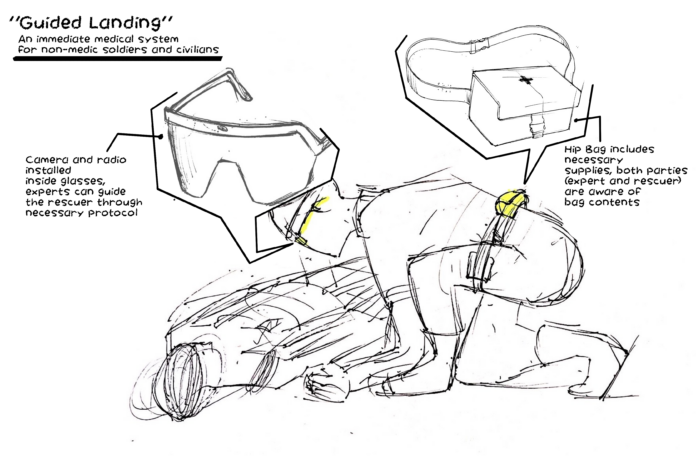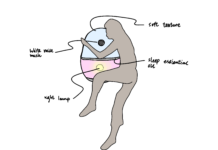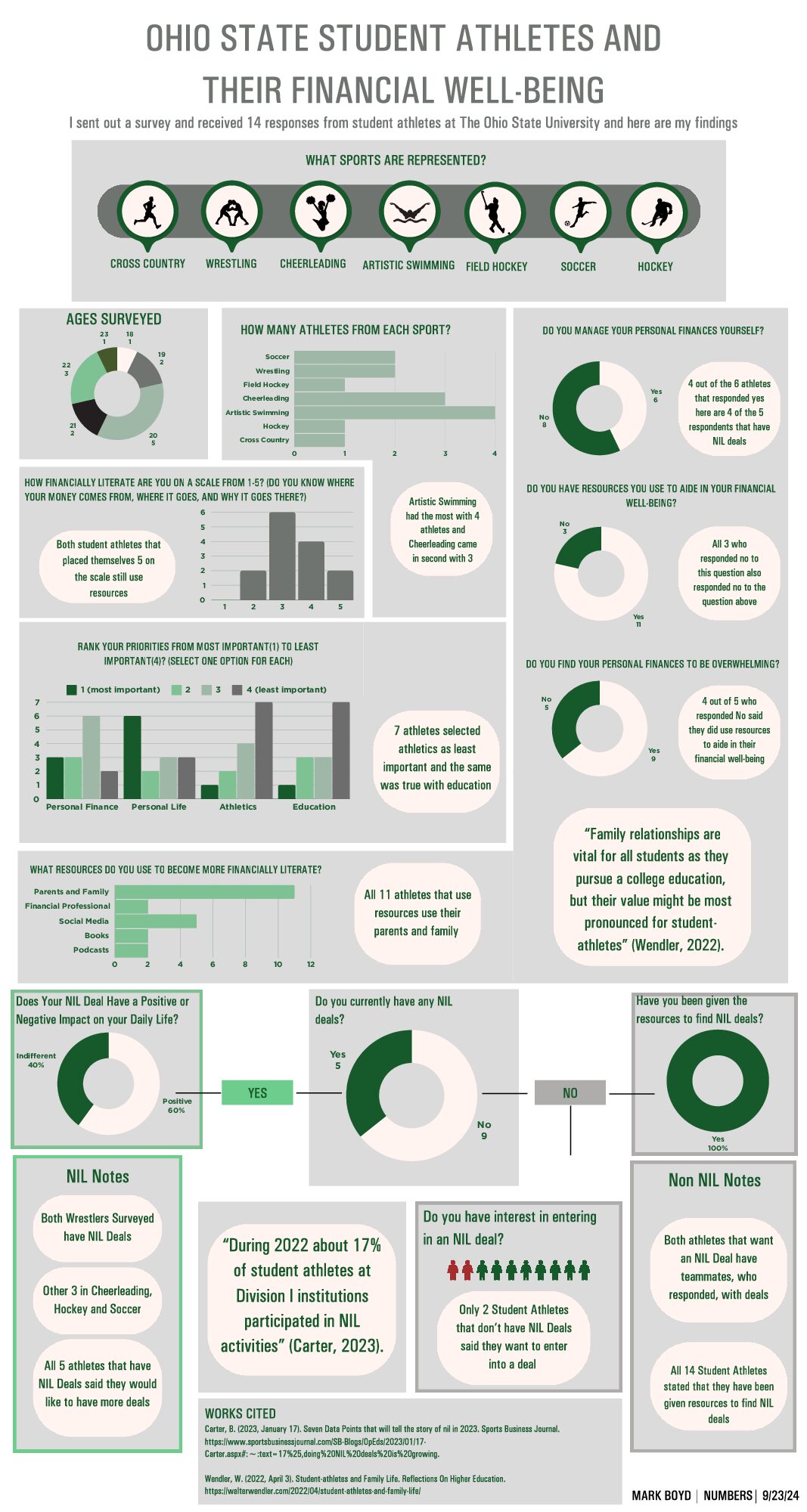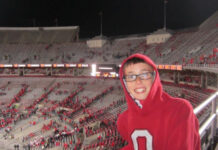Description
The “Guided Landing” system is inspired by the situation of an air traffic control center guiding an amateur pilot to landing simply by lending instruction. The system utilizes glasses with built in camera and radio to guide a non-medic soldier or civilian through any needed protocols. Also included is a hip bag with typical needed medical supplies, so the communicator and the rescuer are on the same page with what supplies the rescuer possesses. A platoon, which can be comprised of anywhere from 18-50 soldiers, typically is assigned one medic. With an average soldier having only very basic medical training, the demand for a medic is very high but clearly in very low supply. By empowering a normal soldier or civilian with the knowledge to apply basic treatment to stabilize patients and to transport, we can get critical patients to the care centers they need faster.
Analysis
How to make up for the ratio of medics to soldiers (at least 1:18) is a tricky task in the least. What is realistic to equip soldiers, or even civilians, with? Most emergency experts, such as the Federal Emergency Medical Administration claim that many are too scared to make things worse when dealing with a critically injured person, but say that the most important thing to do is attempt to help.
This method is meant to empower the majority to take action, similar to following a decentralized command structure. Where the line becomes fuzzy with this idea is what to and what not to equip these soldiers with. Is it too far to try to virtually triage patients for example? Do we include a device for transport? Is the goal just to stabilize the patient and stop any bleeding? Deciding the specific goal(s) of the care is the key for clearing up this idea.




